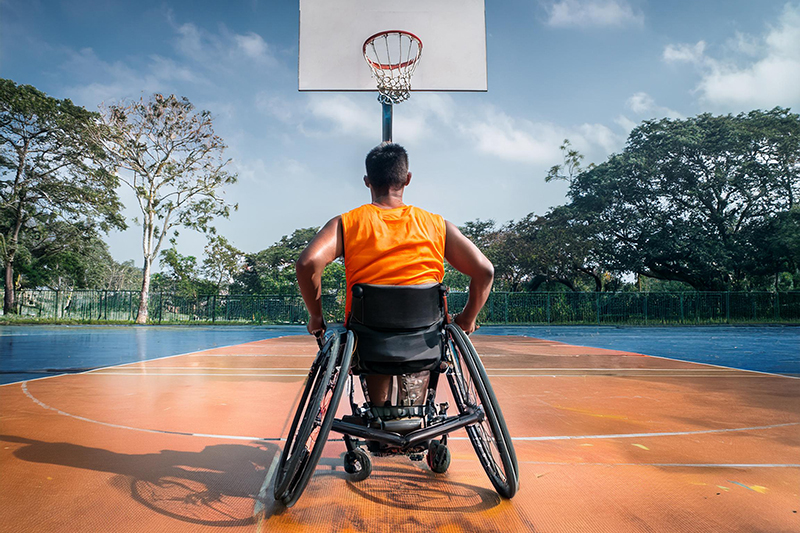The Spirit of Wheelchair Basketball Paralympics
The Paralympic Games have long been a testament to human resilience and the indomitable spirit of athletes who push the boundaries of what’s possible. Among the most riveting spectacles in the Paralympics is wheelchair basketball, a sport that not only demands physical strength but also strategic acumen, team synergy, and relentless determination.
Wheelchair basketball is an intense, fast-paced game. Athletes zip across the court in specially designed sports wheelchairs, deftly maneuvering, passing, and shooting with remarkable precision. Beyond the physical rigors, the sport is a masterclass in teamwork, communication, and leadership—attributes that are quintessential to the success of any organization.
As we delve into the intricacies of talent management within Human Resource (HR) systems, the analogy to wheelchair basketball becomes pertinent. Just as athletes are scouted, nurtured, and developed to perform at their peak, organizations must also adopt strategic talent management practices to harness and cultivate employee potential.
Understanding Talent Management in HR Systems
Talent management in HR systems involves the comprehensive process of recruiting, developing, retaining, and optimizing the workforce to meet organizational objectives. It is a systematic approach aimed at identifying the right talent, aligning their goals with organizational goals, and providing the necessary resources, training, and motivation to achieve excellence.
1. Talent Acquisition
Just as scouts identify promising athletes for wheelchair basketball teams, HR systems must be adept at talent acquisition. This involves:
- Defining Roles and Competencies: Clearly outlining job descriptions and competencies required for each role.
- Sourcing Talent: Utilizing various platforms such as job boards, social media, and employee referrals to find candidates.
- Assessing Fit: Employing rigorous selection processes, including interviews, assessments, and background checks to ensure a good fit for both the role and company culture.
2. Onboarding and Integration
Once talent is acquired, the onboarding process is crucial for integration, much like how new players are assimilated into a sports team. Effective onboarding includes:
- Orientation Programs: Educating new hires about the company culture, values, and expectations.
- Mentorship: Pairing new employees with mentors who can guide them through their initial phases.
- Training and Development: Providing necessary training to equip new hires with the skills and knowledge to succeed in their roles.
3. Continuous Development and Training
In wheelchair basketball, continuous training and skill development are integral to maintaining competitive edge. Similarly, organizations must invest in the continuous development of their employees through:
- Skill Enhancement Programs: Offering workshops, courses, and certifications to upskill the workforce.
- Leadership Development: Preparing high-potential employees for future leadership roles through targeted development programs.
- Learning Management Systems (LMS): Utilizing technology to provide structured and personalized learning paths.
4. Performance Management
In the high-stakes environment of the Paralympics, performance tracking is vital for success. HR systems also need robust performance management processes, which include:
- Setting Clear Goals: Establishing SMART (Specific, Measurable, Achievable, Relevant, Time-bound) objectives for employees.
- Regular Feedback: Conducting regular performance reviews and providing constructive feedback.
- Recognition and Rewards: Acknowledging and rewarding high performers to motivate and retain talent.
5. Succession Planning
Wheelchair basketball teams often groom future stars to ensure continued success. Likewise, succession planning in organizations is crucial for long-term sustainability. This involves:
- Identifying Key Roles: Recognizing roles critical to business continuity and success.
- Grooming Successors: Preparing employees through mentorship, cross-functional projects, and leadership training.
- Knowledge Transfer: Ensuring that the expertise and experience are not lost during transitions by facilitating knowledge sharing.
Leveraging Technology for Talent Management
Incorporating the right technology can significantly enhance talent management efforts. The adoption of HR systems and platforms enables organizations to streamline processes, gain insights, and make data-driven decisions. Key technological tools include:
- Applicant Tracking Systems (ATS): Automating the recruitment process and ensuring a seamless candidate experience.
- Performance Management Software: Facilitating continuous feedback and performance tracking.
- Employee Engagement Platforms: Enhancing communication, collaboration, and engagement within the workforce.
- People Analytics: Utilizing data analytics to measure and optimize various aspects of talent management.
The Parallels and Lessons
Much like a wheelchair basketball team, where each member’s unique strengths are harnessed to achieve collective victory, effective talent management involves recognizing and nurturing individual potential for organizational success. The values of perseverance, teamwork, and strategic planning in sports can profoundly influence and enhance HR practices.
By drawing inspiration from the discipline and dedication of Paralympians, organizations can foster a culture of resilience, inclusivity, and continuous improvement. In doing so, they not only enhance their talent management efforts but also build a more dynamic, capable, and motivated workforce.
The spirit of wheelchair basketball Paralympics serves as a powerful metaphor for talent management in HR systems. Both domains emphasize the importance of identifying potential, nurturing growth, and fostering excellence. By adopting strategic talent management practices, leveraging technology, and drawing insights from the world of sports, organizations can develop a robust and thriving workforce poised to achieve remarkable success.
About Multiable
Multiable understands the complexities of managing a workforce, especially the challenges faced by businesses in Asia. To tackle these issues, we present the Multiable M18 Human Capital Management (HCM) system, a comprehensive solution designed to streamline and enhance your HR processes. Our platform covers all aspects of workforce management, from recruitment and onboarding to attendance tracking, performance monitoring, and payroll administration. By automating these essential HR tasks, our cutting-edge HCM system saves you time, reduces labor, and ensures accuracy and efficiency.
With more than thirty years of experience in labor management transformation, Multiable has continually adapted to meet the evolving needs of businesses. It’s time to leave behind time-consuming manual tasks and embrace a system that boosts operational efficiency. Unlock the full potential of your workforce with the Multiable M18 HCM system. This is your chance to revolutionize your approach to workforce management and drive your business towards remarkable success.
Contact us


